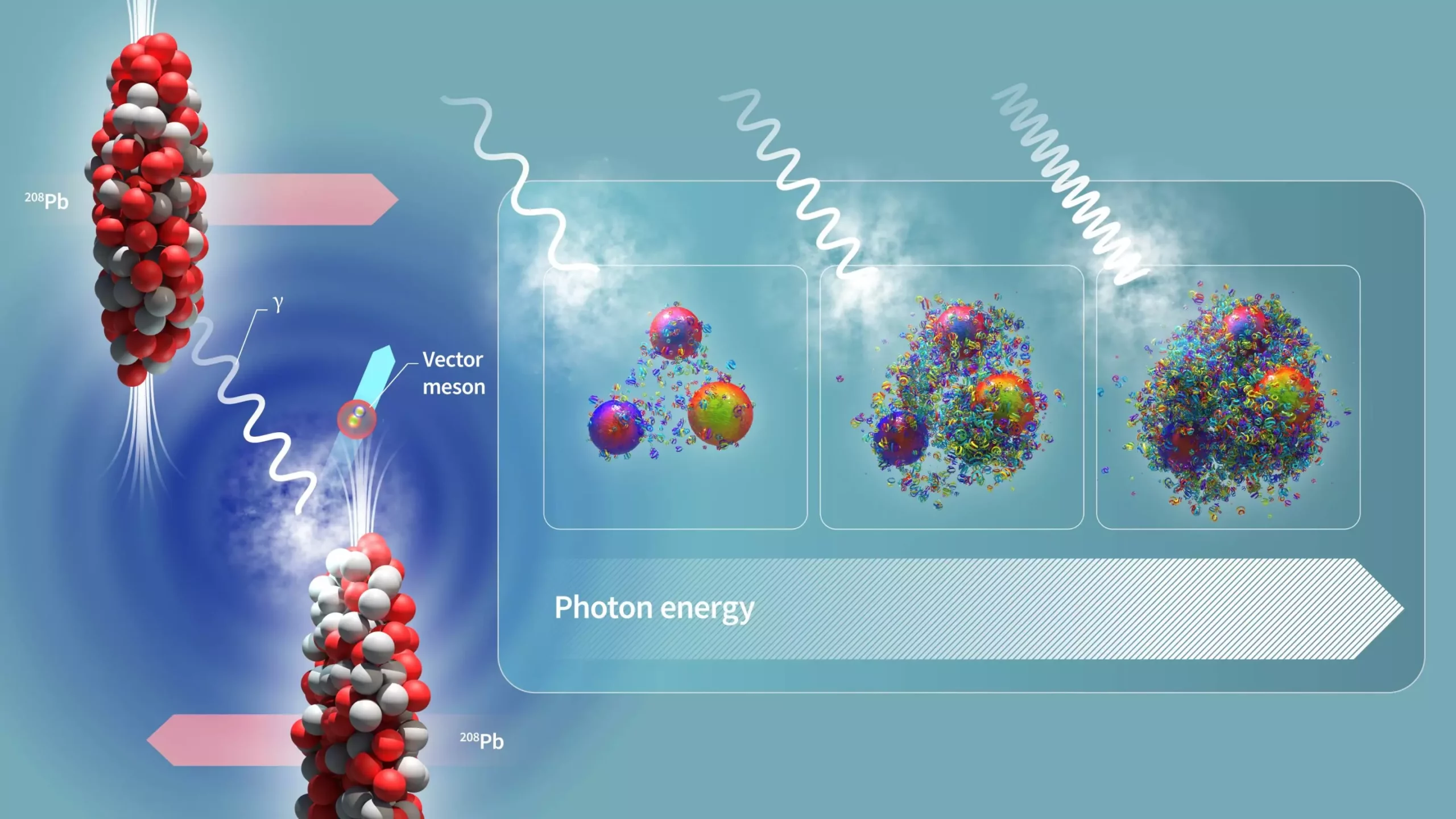The Large Hadron Collider (LHC) is known for its high-speed proton and lead beams that carry a strong electromagnetic field. As these beams travel through the accelerator, they create a flux of photons. Interestingly, when the beams pass close to each other without colliding, one beam can emit a high-energy photon that strikes the other beam. This leads to various types of collisions, including photon—nucleus, photon—proton, and even photon—photon collisions. The ALICE collaboration focuses on studying these collisions to gain insights into protons and the inner structure of nuclei. Excitingly, the collaboration has recently unveiled new findings on this subject at the LHCP 2023 conference.
The Power of Photons in Nucleus Exploration
Photons serve as ideal tools for investigating the interior of nuclei. When a photon collides with a nucleus, it triggers the exchange of two gluons, which are force carriers of the strong interaction. This exchange results in the production of a quark-antiquark pair. Scientists differentiate between two types of collisions: coherent and incoherent. In a coherent collision, the photon interacts with the entire nucleus, while in an incoherent collision, the photon interacts with a single nucleon within the nucleus.
Within nuclei, researchers are particularly interested in identifying high numbers of gluons, as they indicate high levels of gluon density. Theoretical models propose that as nuclei approach the speed of light, the gluon density inside them increases. If this density reaches a certain threshold, the nucleus becomes saturated with gluonic matter, meaning that the number of gluons cannot increase any further. The direct observation of gluonic saturated matter is a significant challenge in the field of strong interactions, but it could provide valuable insights into the inner structure of protons and nuclei.
The production of a charm quark-antiquark pair in a photon—nucleus collision is referred to as J/ψ meson production. Scientists investigate how coherent J/ψ production varies with photon energy to detect gluon saturation effects. As the photon energy increases, it becomes easier to identify the gluonic matter inside the nuclei. The ALICE collaboration’s new findings on J/ψ production, based on LHC Run 2 data, encompass a broader range of momentum than previous measurements from Run 1. These results align with the predictions of gluon-saturation models.
Revealing Geometrical Configurations through Incoherent Collisions
In addition to coherent collisions, incoherent collisions provide valuable opportunities to study the quantum fluctuations in the internal structure of protons. The ALICE collaboration accomplishes this by examining the distribution of momentum transferred to the J/ψ meson. In a recent study, the collaboration has successfully demonstrated that this momentum transfer can only be accurately described when models include areas of saturated gluonic matter called gluonic hotspots.
Moving forward, the ALICE collaboration plans to continue investigating these phenomena in LHC Runs 3 and 4. With higher precision measurements and larger data samples, they hope to gain more powerful tools for understanding the role of saturation and gluonic hotspots in protons and nuclei. These ongoing efforts hold great promise for unlocking further insights into the fundamental nature of matter.


Leave a Reply